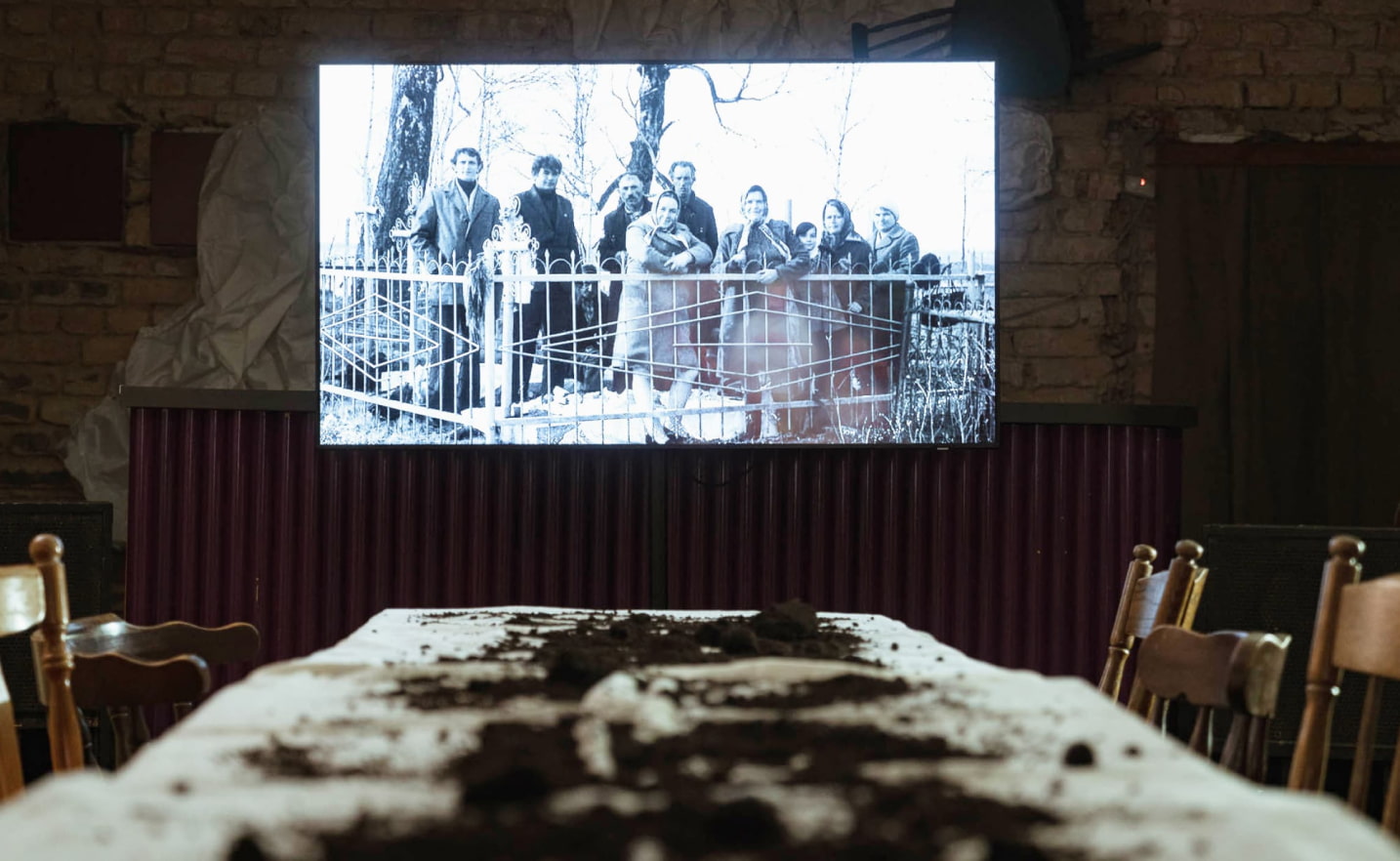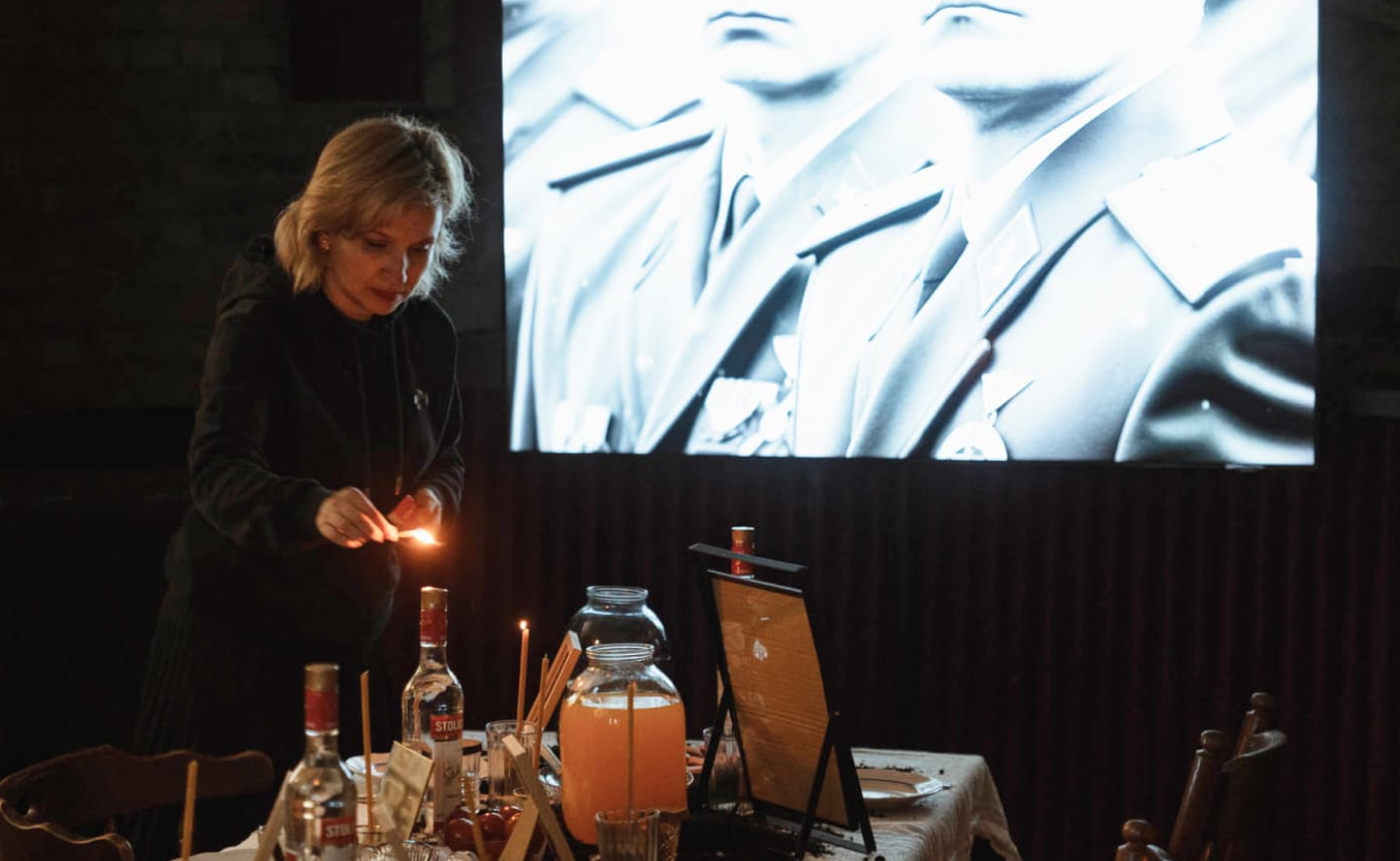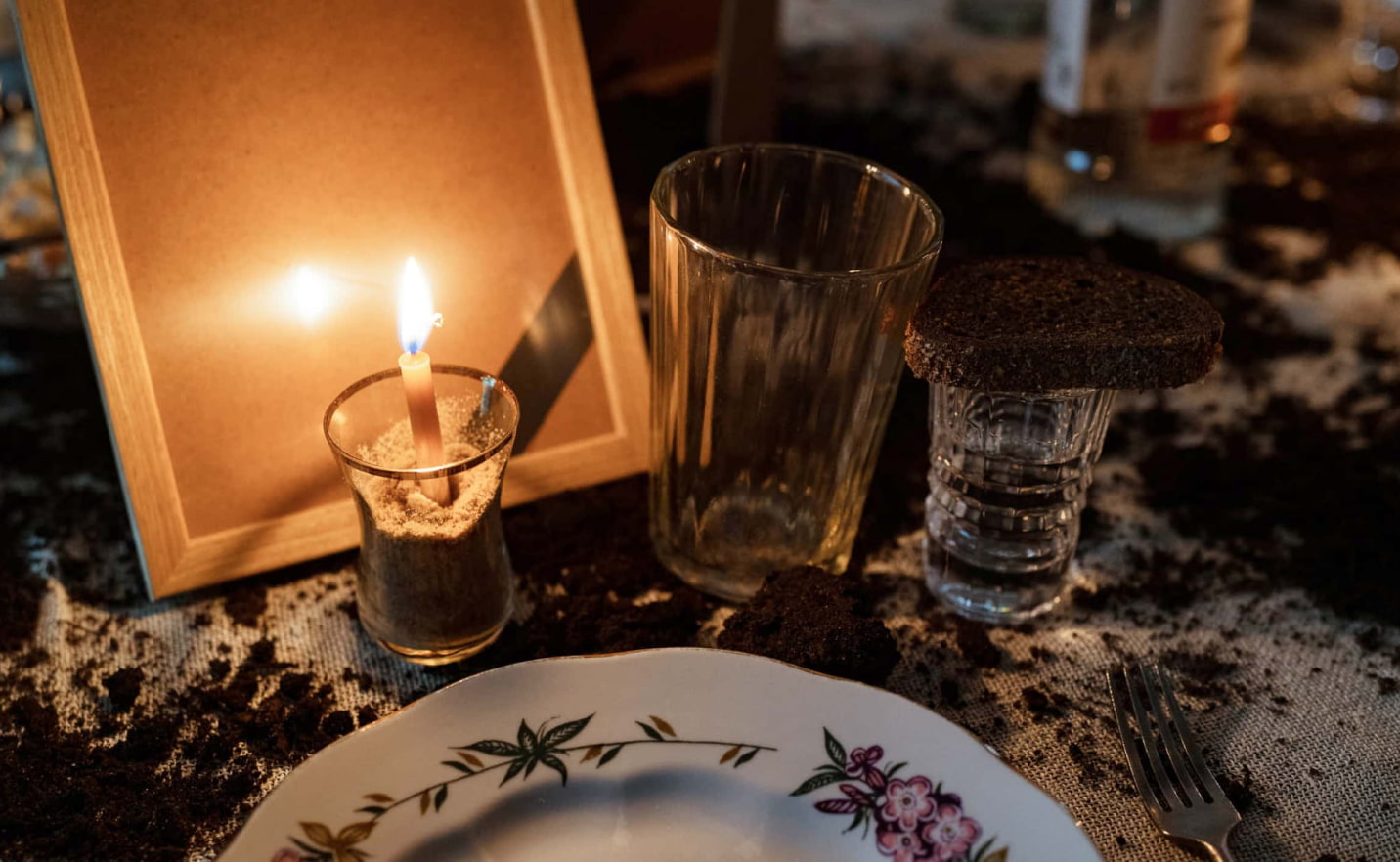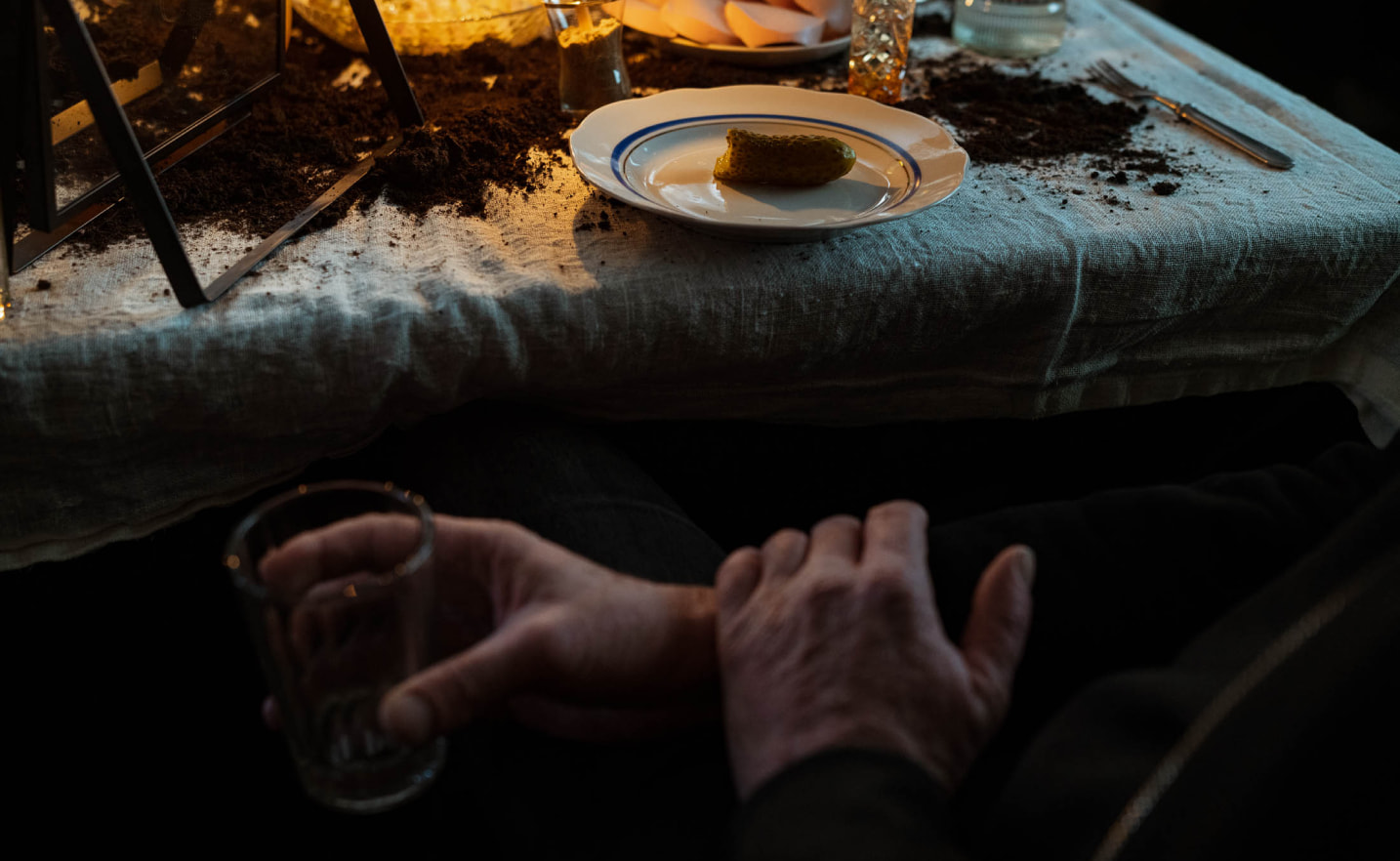Price-less
Maria Gvardeitseva
Riga, Latvia, 2023
Perfomance
The artist's performance takes place in a cell-like space that reflects the somber atmosphere of a crypt and refers to the sacred rituals that take place there. The installation is a carefully curated reconstruction of the communal meal that was traditionally served after funerals in the Slavic republics of the USSR, and which continues to be a custom to this day.
The idea of the performance is to involve visitors to interact, and based on the reactions and stories of the participants, it will create a unique and dynamic experience each time it is presented. The artist herself prepares the "feast," with each product carefully selected to fit within the conceptual framework of the installation. This attention to detail ensures that the experience is both immersive and thought-provoking, inviting participants to engage with the work on multiple levels and encouraging them to reflect on their own relationship with tradition, memory, and the rituals of communal mourning.
The tradition of a communal meal after a funeral has its roots in the distant past. Similar customs are observed in the faiths of various nations and are related to belief in the immortality of the soul. In the Christian (particularly the Orthodox) tradition, the funeral meal is a particular ritual, intended to remember the deceased, pay tribute to them and commemorate their good deeds. In practice, such meals a heady mixture of paganism, Christianity and a drinking session.
In Soviet times, such meals took place in flats, canteens and restaurants, or outdoors in the warmer months. There was also a widespread tradition of collective mourning for the dead, to which professional mourners were invited. Death in Soviet and post-Soviet times is not an “aesthetic” event, especially in rural areas. The body of the deceased is kept in the house where he or she lived, and us washed, usually by female relatives. Cremation is not customary in the Orthodox tradition. The body is buried in the ground. It is usual to kiss the body of the deceased and weep over it. Partaking of food at the graveside is also accepted, and a table might even be laid specially for the purpose. A glass of vodka and a slice of black bread is traditionally left on the grave as the portion of the deceased (in everyday life, the food and drink left for the dead is often taken by homeless people and alcoholics).
Soviet and post-Soviet propaganda puts private death in the context of Christian asceticism and martyrdom, which it treats as a necessary part of the “Great Victory”. Official memory has no room for individual stories and personalities. Its form of commemoration tends towards pain and ugliness, drunkenness and excess to the point of nausea. Such nausea may also infect the funeral meal, when its rite is celebrated with a lack of aesthetic feeling and distance.





